At the start of each new year, it’s tempting to make sweeping changes around work, home, relationships, food, and movement. Instead of tackling everything in your life that needs changing, start with one. Then watch the ripple effect as it impacts other areas of your life. My Ajax ramble project is doing exactly that.

Acting On An Intention
You may recall that my intention for 2023 is to have 52 unique Active Ajax Adventures this year. So far we have already visited eight unique parks in January. But what’s interesting about our experiment is noticing how making progress on one goal impacts others. What if you tried the same thing: setting an intention in one area and seeing what changes in other areas of your life?
My recent rambles with Ajax have taken me through the following parks:
- Roanoke Park, north of Capitol Hill
- Twin Ponds Park, a wooded trail with ducks and massive cedars in Shoreline
- Meadowbrook Pond, a stormwater detention and flood-control facility in Seattle
- Pinehurst Playground, a small area for kids with play fields and playground equipment
- Pinehurst Pocket Park, a tiny neighborhood green space with picnic tables and a Little Free Library across the street
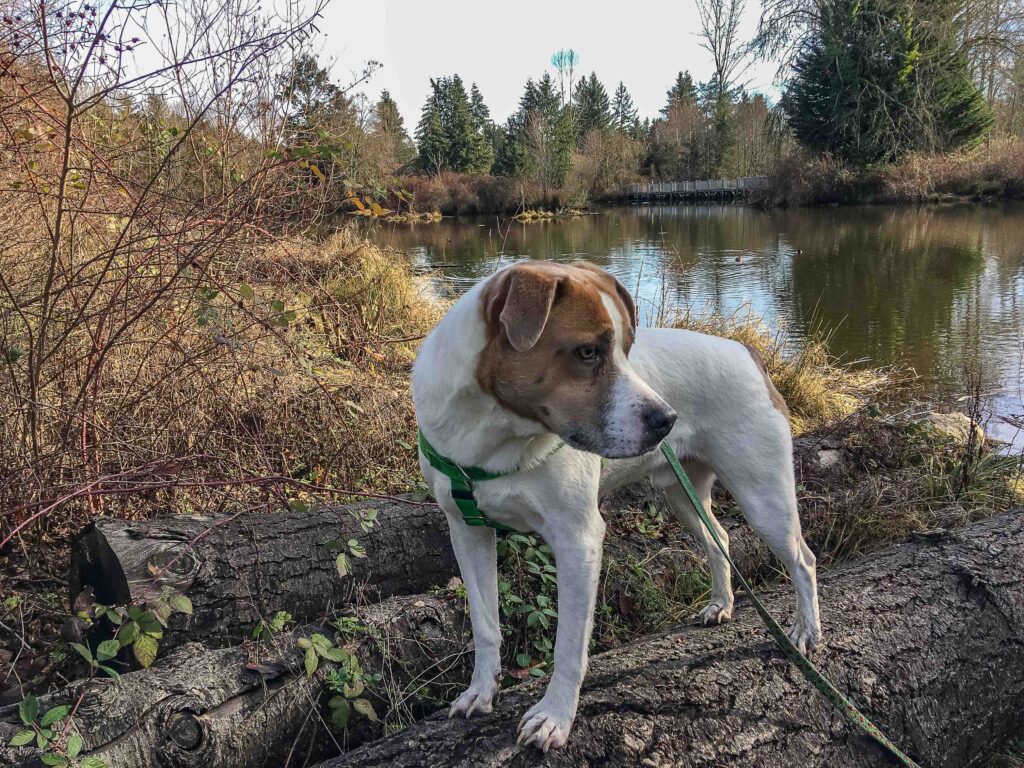
Recent Rambles
So far, Ajax and I have logged 9 hours of “adventure time” on park walks ranging from 15-109 minutes. Seven we did by ourselves; the other we did with my husband and daughter. Weather conditions were sunny for two of them; the others were overcast or rainy.
Rainy Roanoke
Perhaps the most surprising ramble was following a mid-week Physical Therapy appointment. I’d intended to take Ajax with me to the arboretum, but I decided to go there someday that isn’t so rainy. Instead, we pulled over at the corner of Roanoke and tenth, parked directly across from U. W.’s Oceanography department, and wandered around in a hilly, scenic neighborhood I’d never visited before. Seeing Thomas G. Thompson, the UW’s research vessel, brought back memories of graduate school days.

I have always considered myself to be a fair-weather adventurer. This ramble project is teaching me the value of going out in all weather, including downpours. I am discovering local sets of stairs; 80 steps lead up from Queen City Yacht Club to Roanoke Park. And we stumbled upon a downed Heritage Tree, a European white elm, which must have been destroyed in a recent wind or snowstorm as it still had yellow police tape around it.
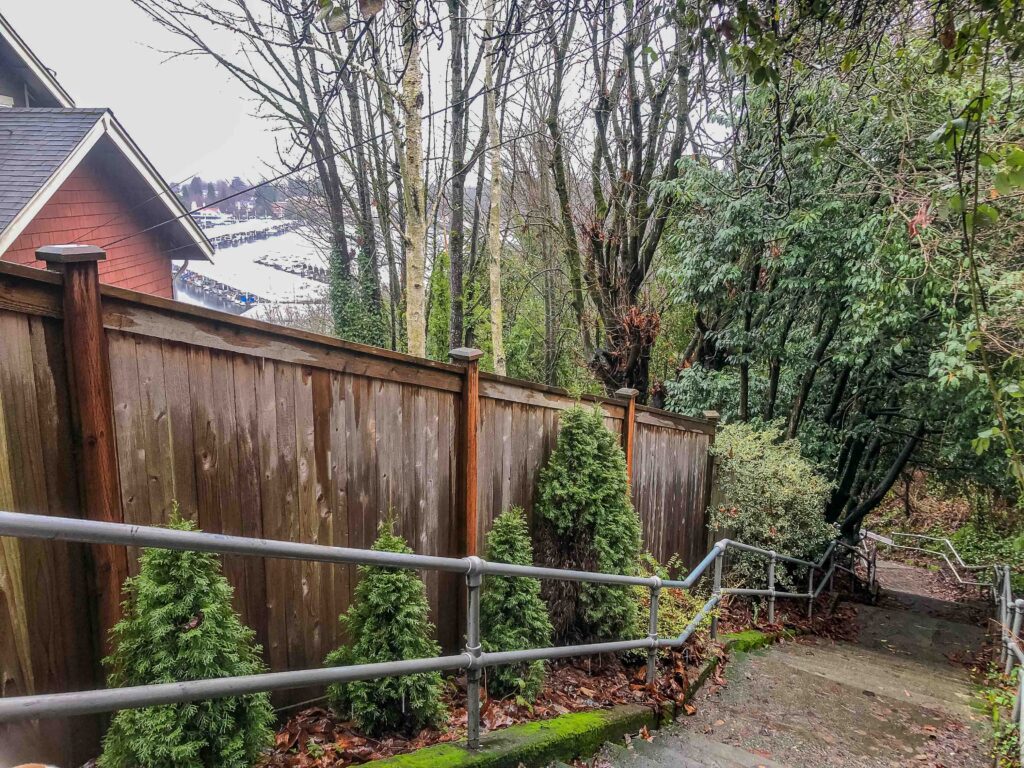
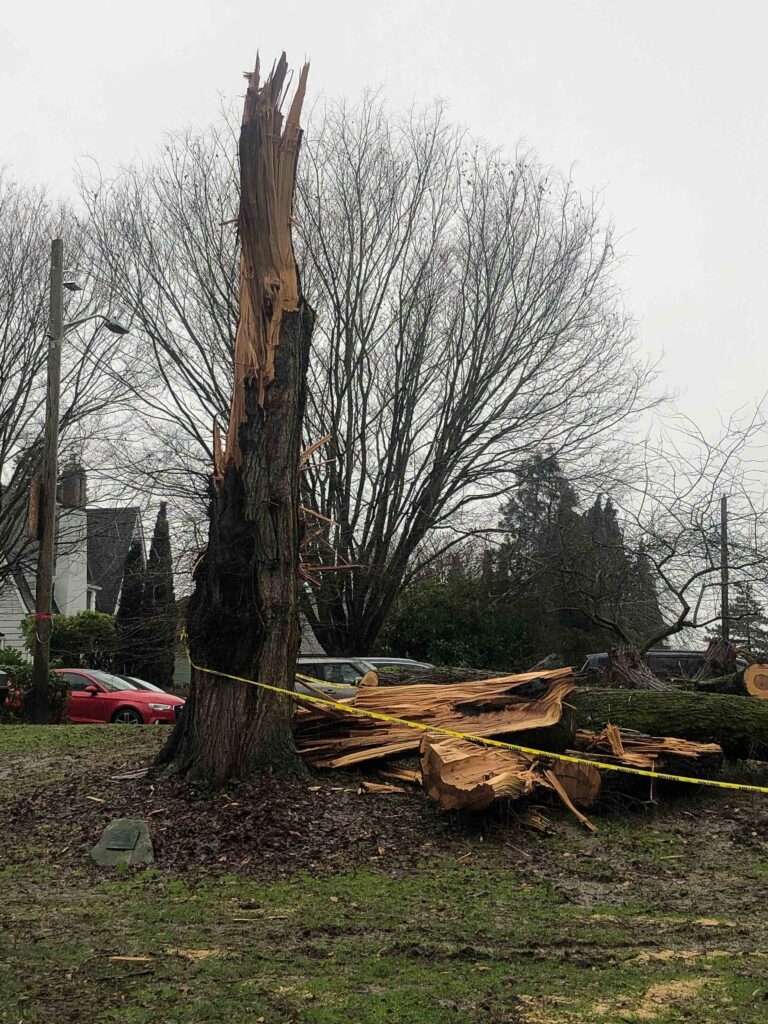
Twin Ponds Park
Twin Ponds Park sits halfway between our house and a Shoreline grocery store I visit on occasion. On days when I’m pressed for time, I’ll take Ajax with me for a little outdoor stroll before I stop at Town and Country. Two of my favorite things about Twin Ponds are the enormous old-growth cedars such as the one pictured below, and winter waterfowl such as wood ducks, buffleheads, wigeons, and mallards.
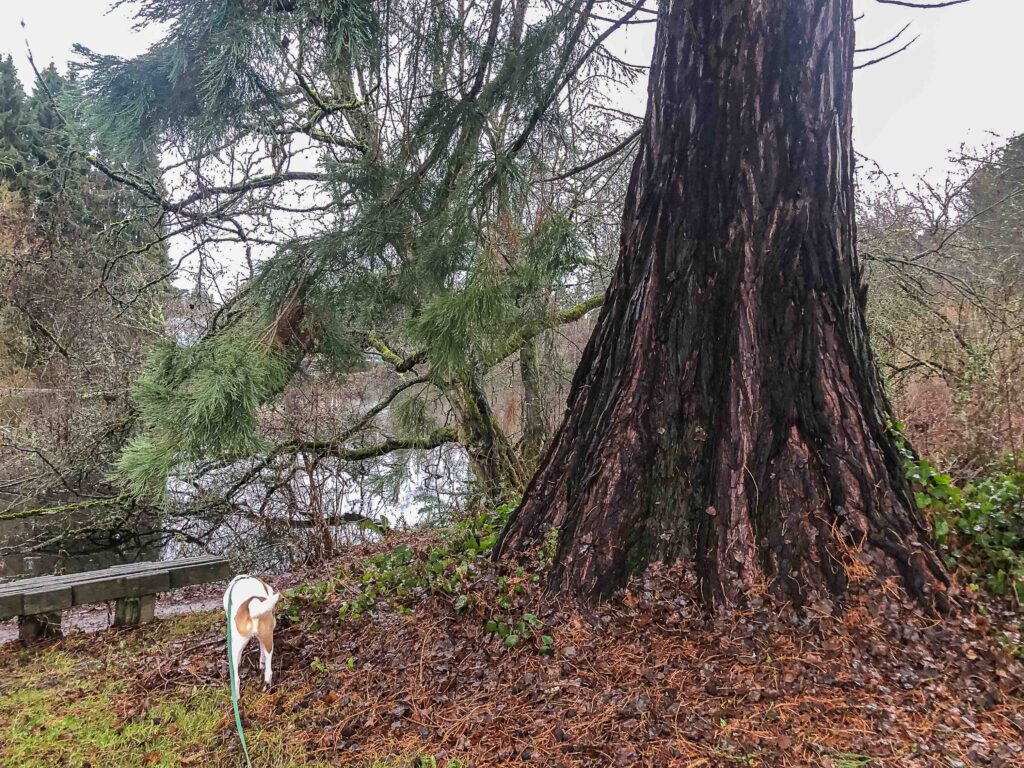
Pinehurst Playfield
Our Pinehurst ramble was a bit of an accident. It started with a library walk and then, to take advantage of the fact that it was not rainy, I extended it to the area west of the neighborhood we visited on our Seven Libraries Ramble. Only, we overshot our objective and had to pick up this playfield to make the ramble count toward our 52. Cheating? Hey, the only rules for this project are the ones I make up for myself! The park itself is pretty ordinary, but I find the houses around it fascinating.
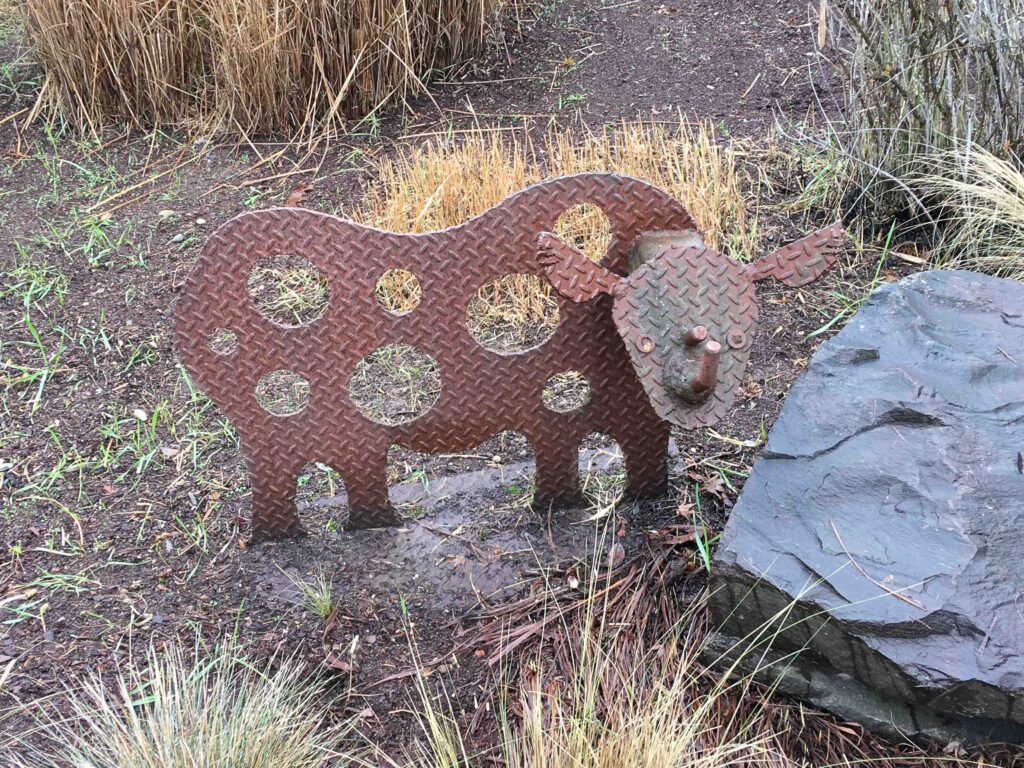
Meadowbrook Pond
The highlight of the first 15% of the project was a Saturday afternoon stroll with my dog, husband, and daughter around Meadowbrook Pond. The takeaway from that adventure was to bring a pair of binoculars as the season advances so I can watch for unusual birds. I also really liked having a pair of youthful eyes along with us. Our daughter spotted a Wilson’s snipe, a shorebird I’m not sure we would have seen otherwise. Bonus: we got our kiddo away from her screens!
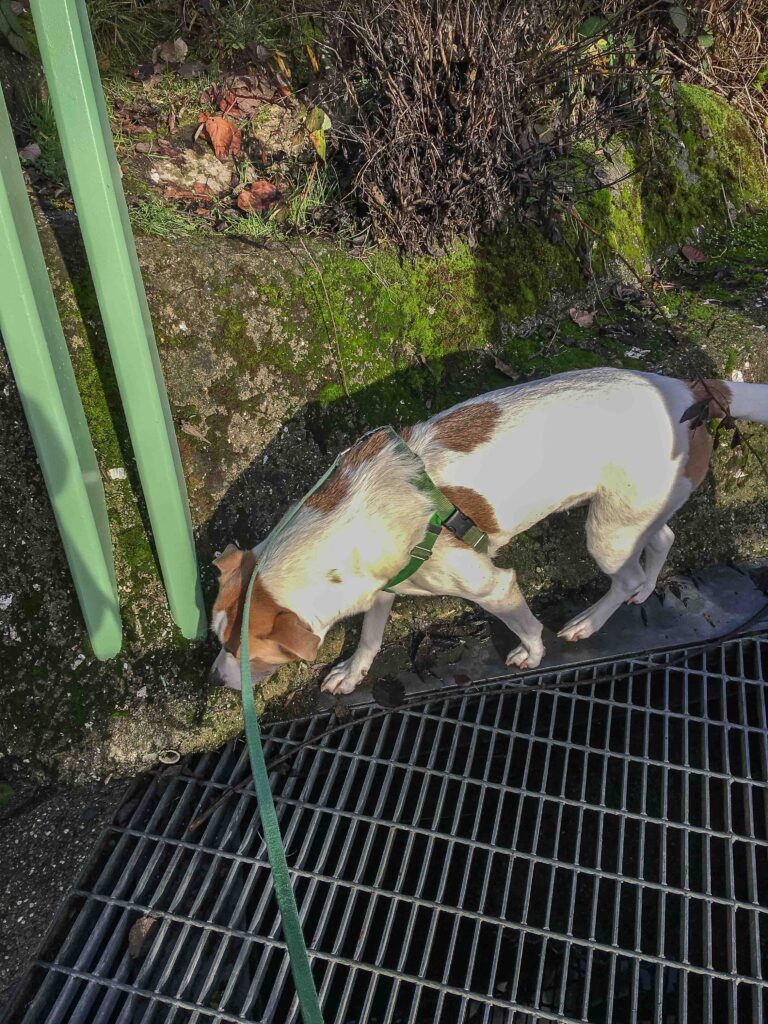
Ripple Effect: Ramble Benefits
The biggest takeaway from these earliest rambles was observing what happens to my attention. When I am in a familiar neighborhood, I reflect on everyday problems. But in a new area, I focus completely on what’s around me. I’m also discovering:
- Paying more attention during our rambles is carrying over to routine walks with Ajax. Now, we go on different routes every time we walk. I hadn’t realized how limited I’d become. How much of our lives do we exist on autopilot? If we don’t remember much about our everyday lives, what can we do to be more present and less numb?
- On our walks and rambles, I’m noticing remodeled or renovated houses; homes painted unusual colors; interesting yard decorations; and landscaping changed since the last time we walked these streets.
- Finally, I’m experimenting with setting intentions for each walk. Perhaps I pose a question to the multiverse and mull it over. Or, I take a photography prompt and look for multiple possibilities for my photography. What if we set an intention for every outing? How much more mindful and purposeful we could become!
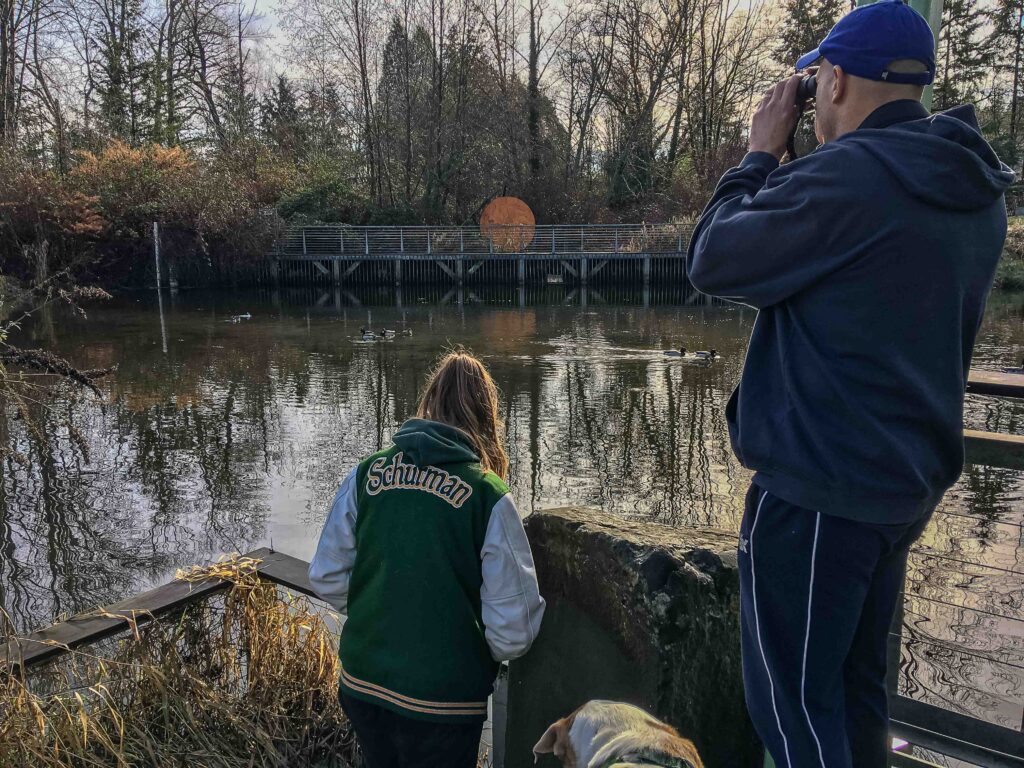
Biggest Ripple Effect? More Joy
The biggest ripple effect I’m experiencing from three weeks of rambling is … more joy in all areas of my life! I love being outside, and visiting new and different places with Ajax is doing exactly as I’d hoped. It’s allowing me to optimize the following:
- Appreciate beauty
- Connect deeply
- Move frequently
- Create abundantly
- Improve lovingly
- Challenge gently
And while our rambles have satisfied my desire and need to be outside, I very much look forward to returning to the mountains soon. If you have noticed any ripple effect from changing a habit in one area and seeing it carry over into others, share that in the comments. I love hearing from readers and I respond to each valid comment.

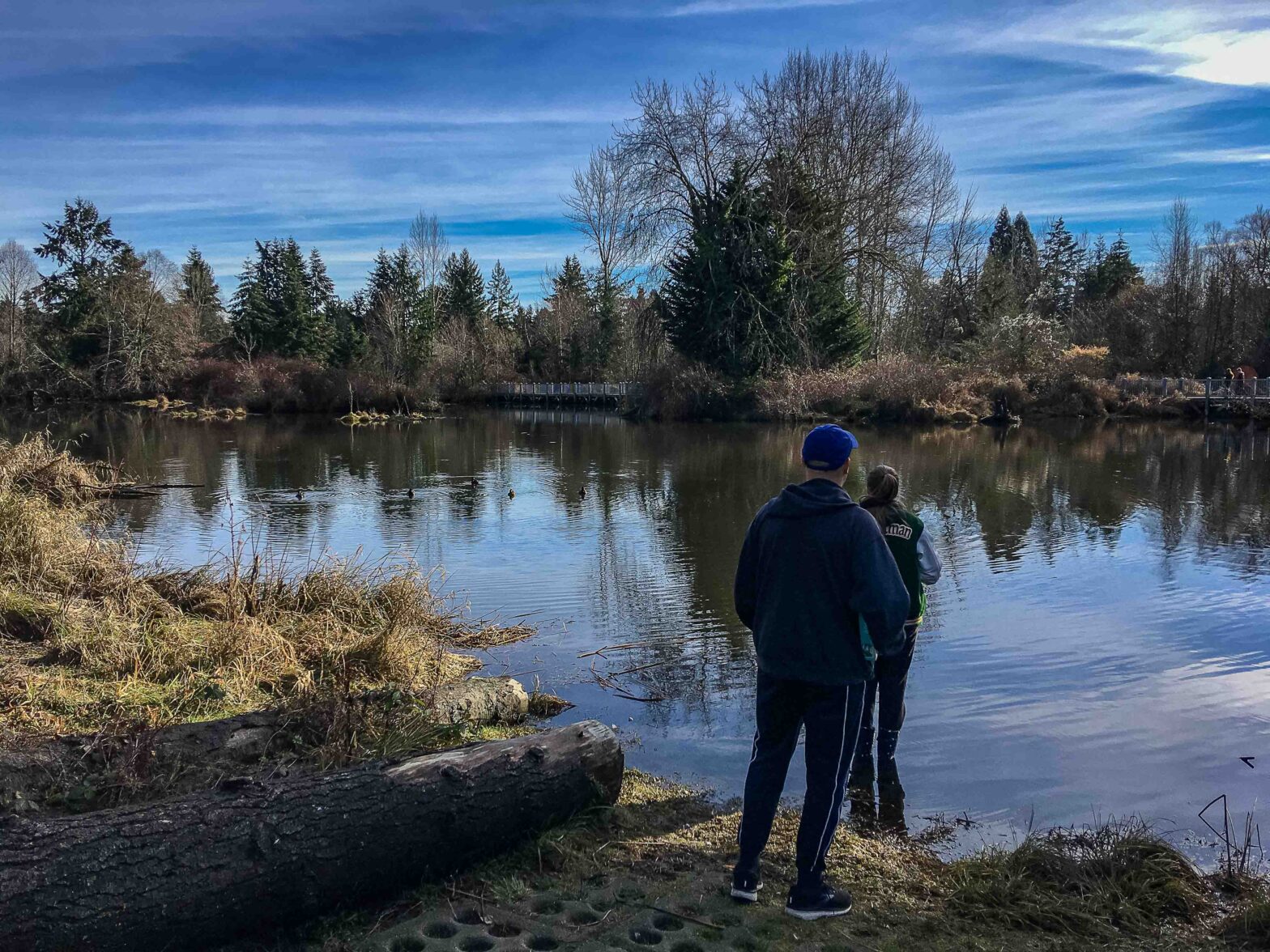
Great post touching on several of the “life-lessons” that are so dear to me. Right off the starting blocks, I loved “… what’s interesting … is noticing how making progress on one goal impacts others”. True, so true, and so powerful. Maybe that realization should not come as a surprise since “everything and everyone is connected” has become (sometimes painfully) obvious in the world recently; this same interconnectedness exists withing us, physically but also mentally. We may try and address a fear or phobia, only to realize it helps us procrastinate less; we may decide to improve our eating habits, only to realize it makes us want to reconnect with “lost” friends; better than stocks, bonds, and crypto… working on ourselves guarantees fabulous and often totally unexpected returns on investment. Which of my “intentions” ended up yielding far more than I expected? For anyone who’s known me for more than 5 minutes, the answer is obvious: Long-Distance / Section hiking. When I first decided to hike for days or weeks on end, my core intention was to become intimately connected with the outdoors, and to do it in a way where I would be largely safe reliant and reasonably confident no matter what lay ahead of me. Also, to do it in a way that is constantly evolving, with no real “end” in sight but for the day when I won’t be able to do it anymore. No tagging, no ribbons, no finish-line, no winning… but “living the trail”. It truly transformed my life: I have become more confident, I have learned to do more with less, I have leaned to “breathe deeply” and calm down when things don’t go my way, I have learned what matters and what does not, I have learned to appreciate the here-and-now instead of trying to “cling” to things and mourn their loss, I have learned to not bet it all on Plan A but instead be innovative and resilient, etc. I have learned, as you so aptly put it, that “the only rules for this project are the ones I make up for myself!”… when hiking, or when making decisions is life. that realization gives great freedom to play, and great responsibility when the rules involve more than just ourselves (for example, the “great turnaround question” when others in a hiking party look for our leadership in the face of changing weather or terrain).
Now, for a radically different example: my wife and I spent a good amount of time recently reviewing our expenses and making adjustments in preparation of retirement and the “fixed income” financial boogey-man. How “dry” that finances-review intention felt! But, as we started working on it, we engaged in “what matters most to us” discussions… to a level we had seldom done before; we are now clear about what we want to make time and space for in our “golden years”. We “uncluttered” our spending habits, giving us a feeling not unlike the one we get from raiding the attic and having that yard-sale. We set aside time to find how best to take care of aging parents, finally having those “dreaded discussions” about what they want at this stage of their life, and how best to provide it to them. We started playing Scrabble more frequently, sprinkling some sugar on top of the bitterness of the money talk. Looking at what we do with money brought up to the forefront your other critical point: “How much of our lives do we exist on autopilot?”. “Intentionally”, anything above zero is too much – constant mindfulness is the graal. Realistically, striving to seize any opportunity to turn auto-pilot off and fly the airplane ourselves might be a good way to start. In that spirit, I have created a game I can play every day and where I deliberately change something in any routine I detect in my life: one day I may do my morning stretches first and brush my teeth second; on “garbage day” I may put the recycle and refuse bins on the other side of our garage driveway; when driving to my doctor appointment, I may take the “long way” in, or back, driving intentionally through unknown neighborhoods and without GPS assistance; when hiking a well know trail, I may “investigate” a spur trail I never took, or explore the neighborhood at the trailhead, or sit for a while on that bench even if “I don’t need to”; etc. As you noted, turning off autopilot jolts us out of day-dreaming / day-planning because we have to pay real attention to what comes next… lest we knock ourselves unconscious on the next lamppost, cartoon style. Hurray for endless discoveries and wonders!
Thanks for the in-depth comment, Gerard. I love “working on ourselves guarantees fabulous and often totally unexpected returns on investment” and your story about how the wilderness has given you more confidence, more willingness to do more with less, and to self-soothe. Innovation and resilience are such strengths that cannot be taught but learned; I hope as my daughter goes through her college adventure she will encounter ways to “grow” these traits. Hear, hear for PLAY!
I absolutely love the idea of “decluttering finances” — the deepening of a relationship when you take that wilderness “come what may/problem-solving” ability and apply it to some real-life situations you both can benefit from. I wish I could start a Scrabble game with you from afar (long, long story for another time!)
And finally, it looks like you already have the “Gamify” spirit of turning routine into a curiosity, getting off auto-pilot on any rituals that might cause the brain to shut off. Exactly what I hoped the AAA project would do for me. Getting off auto-pilot allows for us to notice, seek out, and enjoy … JOY! Smiling over here. Good on ya!
Go gamify, you’ve earned it with your thoughtful post!
Setting intention for your walk. Great idea. I will do it too. It is easier to be in autopilot mode than starting something new, too much effort. Your blog encourages me to try something new. I can’t wait to go back to the mountain . Spring is around the corner. Hopefully.👍
I’m so glad to hear that the blog post is encouraging you to try something new! Keep me posted as to how it goes. See you on the trail!